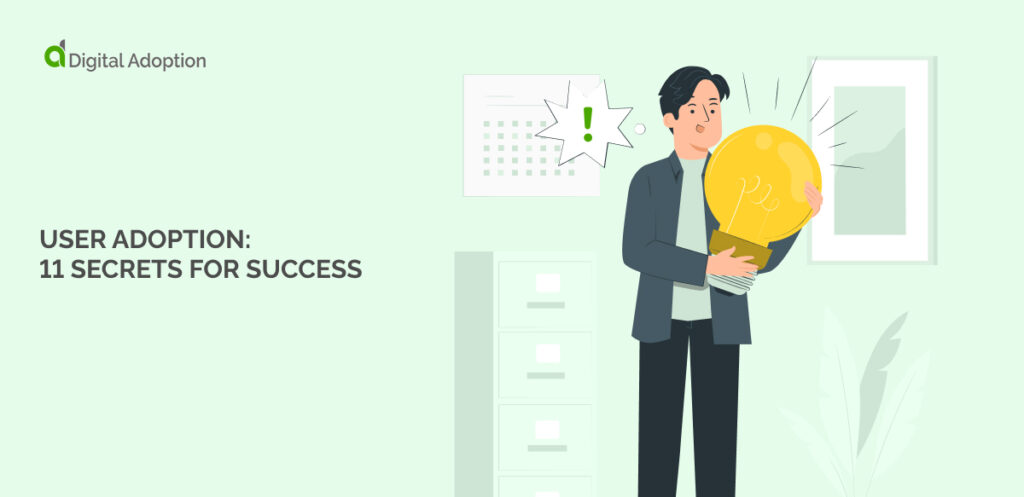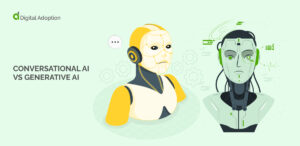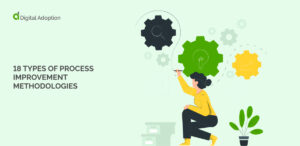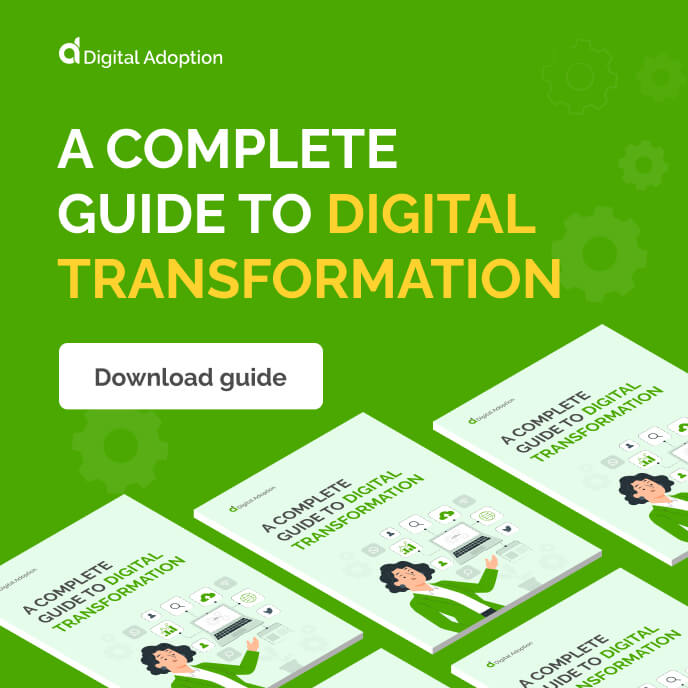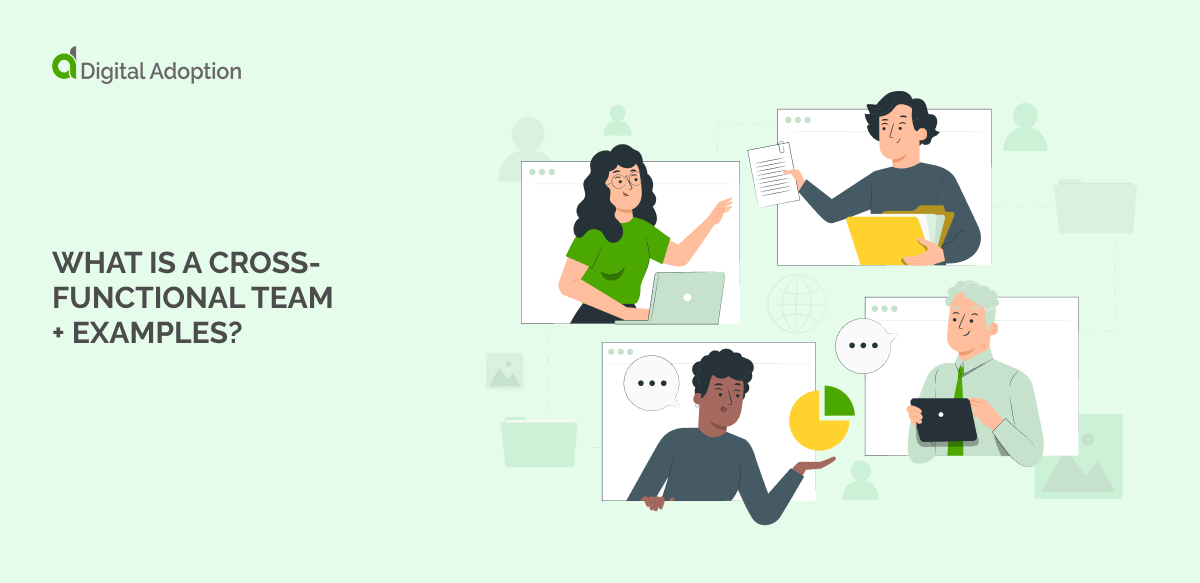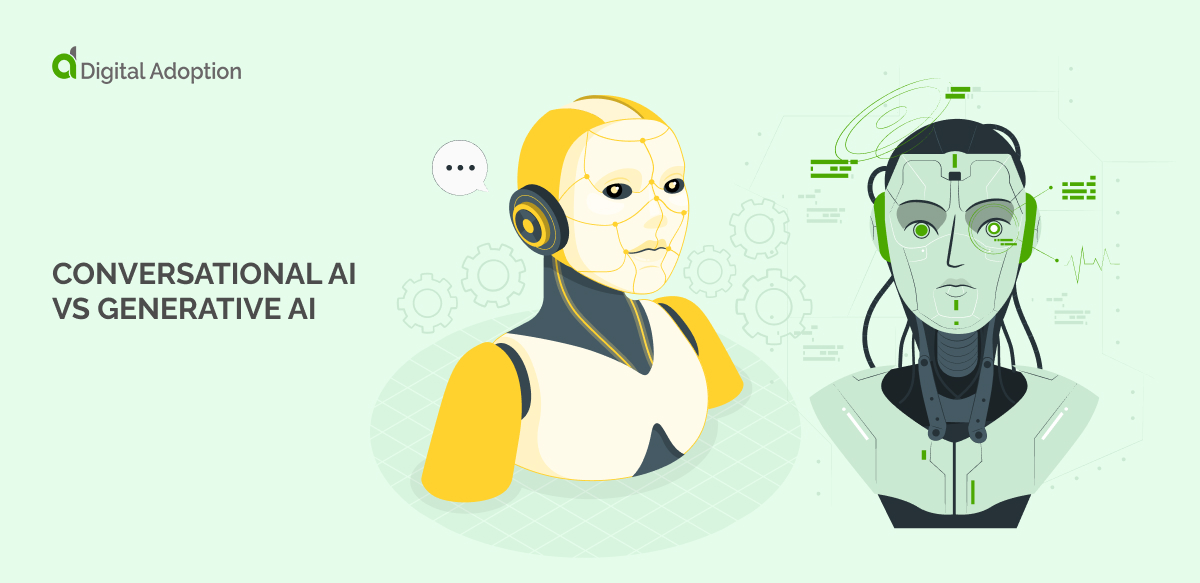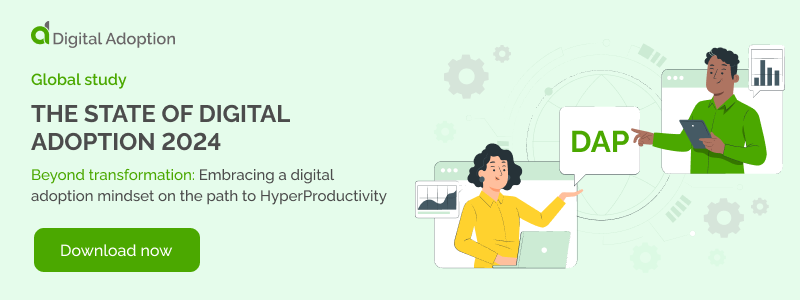Businesses and vendors who provide Software-as-a-Service (SaaS) understand that simply making a sale is only the first step. Maintaining digital adoption rates and ensuring the user properly leverages those tools is essential for customer retention and the continued success of the product or service.
With Deloitte reporting that customer churn rates can grow as high as 30 percent per year in some global markets, SaaS providers should know how healthy user adoption plays in customer retention.
Achieving high user adoption rates is crucial for SaaS companies to achieve high user adoption rates to ensure a positive customer experience transformation and a net negative churn rate. This leads to long-term success, with increased revenue and growth for the business.
In this article, we will explore the topic of user adoption and reveal the secrets to increasing its success. We’ll begin by defining user adoption and who is responsible for it in your organization. We will then delve into the benefits of high user adoption rates and reveal the essential secrets to boosting user adoption.
These secrets include creating an intuitive user interface, providing engaging training, and supporting your users throughout their journey. By the end of this article, organizations should have the knowledge to improve user adoption and enhance overall success.
What is user adoption?
User adoption describes introducing new users to a product or service, educating them about its benefits, and persuading them to use it. The primary goal of user adoption is to help a product or service become more widely used by increasing the number of users who regularly engage with it.
User adoption is a critical aspect of driving growth and generating revenue. Getting new users to adopt a product can be challenging but essential to achieving long-term success. Without a reasonable number of users, it may be challenging for a business to build and sustain momentum.
Who is responsible for user adoption in your organization?
For SaaS organizations, in particular, user adoption is critical to achieving success with their product or service. But who exactly is responsible for driving user adoption within the organization? Is it solely the responsibility of the sales or customer success teams, or does it fall on the shoulders of upper management, product development, or even the end users themselves?
A well-structured user adoption plan requires a collaborative effort from everyone in an organization. However, the responsibility of driving user adoption predominantly lies on the customer success or account management team. As the primary point of contact for the customer, they are best placed to drive adoption, provide relevant education, and help customers gain maximum value from the software.
It’s vital to have a dedicated customer success or account management team focused on driving user adoption. Their primary goal is to help customers achieve the maximum value from the product by providing valuable insights, industry best practices, and hands-on training. They also work closely with the product development team to gather feedback and provide solutions to user challenges.
However, upper management also plays a prominent role in driving user adoption in the organization. They need to provide the necessary resources and support for the customer success or account management teams to succeed. Upper management must also collaborate closely with the customer success team to understand customer needs and how they align with the organization’s overall strategy.
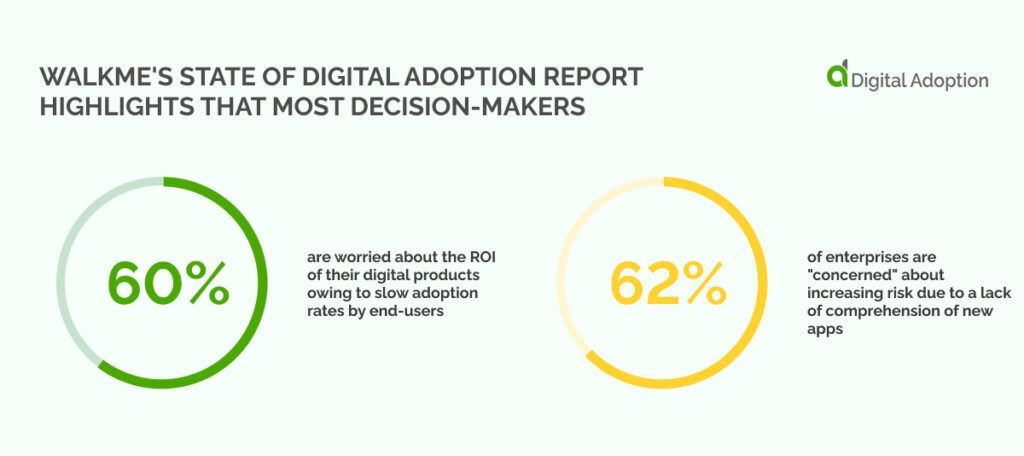
WalkMe’s State of Digital Adoption Report highlights that most decision-makers (60%) are worried about the ROI of their digital products owing to slow adoption rates by end-users. Moreover, the report reveals that 62% of enterprises are “concerned” about increasing risk due to a lack of comprehension of new apps.
On the other hand, the product development team can drive adoption by developing a user-friendly interface, creating features to meet customer needs, and providing user-friendly documentation. End-users are also responsible for adopting and effectively using the product. Organizations can increase user adoption by delivering easy-to-use interfaces, relevant features, and appropriate training.
In conclusion, healthy user adoption requires a collaborative effort from everyone.
The benefits of achieving high user adoption
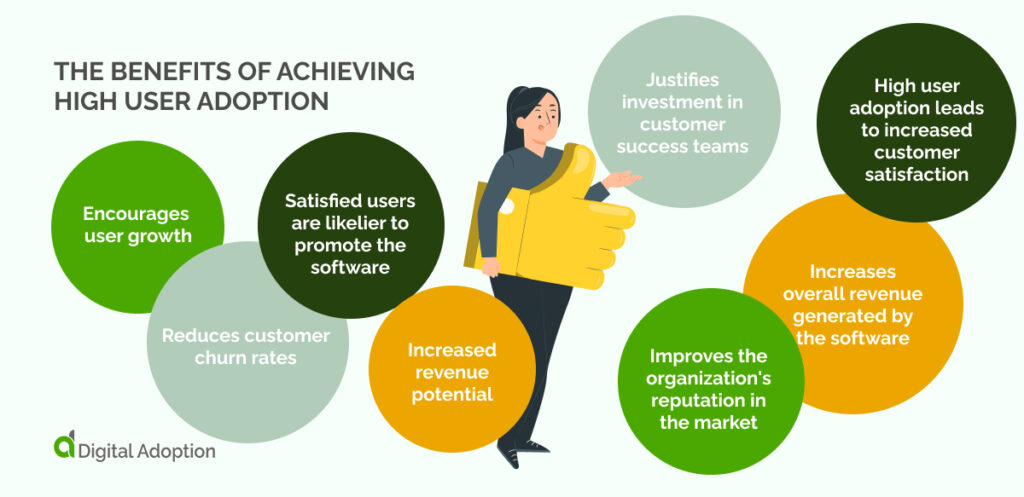
Organizations that achieve high user adoption rates reap numerous benefits in terms of increased customer satisfaction, user growth, and revenue generation.
Here are some of the key advantages of having high user adoption:
- Reduces customer churn rates: When users fully adopt and integrate the software into their workflow, they are more likely to continue using it and renew contracts. Low user adoption rates increase customer churn as users may not be satisfied with the software or its support.
- Encourages user growth: Satisfied users who have adopted the software are more likely to promote it to other potential customers, which can be used as a marketing and sales tool for growth. They are also more likely to purchase additional features or upgrade to higher solutions.
- Satisfied users are likelier to promote the software: If users are happy with their experience, they may share that experience with others and recommend your product, leading to increased user growth.
- Increased revenue potential: With increased user satisfaction comes increased revenue through sales of additional features or upgrades from satisfied customers.
- Justifies investment in customer success teams: A team dedicated to driving user adoption provides adequate resources and customer support, leading to higher user adoption rates and improved revenue generation potential.
- High user adoption leads to increased customer satisfaction: When users are satisfied with the software and its effectiveness, they are likelier to become loyal customers that renew contracts or upgrade. This improves overall customer satisfaction.
- Increases overall revenue generated by the software: Higher user adoption means higher revenues, as users will be more willing to purchase additional features or upgrade from certain packages.
- Improves the organization’s reputation in the market: A well-adopted SaaS solution allows organizations to build trust by becoming a go-to solution provider for their target audience.
Uncovering the secrets for improving user adoption
Acquiring many users is crucial to keep a business thriving and achieving its goals. However, securing new users’ interest and loyalty can take time and effort. The key to compelling user adoption lies in a well-planned campaign to raise awareness of the product, inform users of the benefits, and encourage them to try it out.
Statistics from BetterCloud’s The State of SaaSOps 2020 reveal a remarkable tenfold increase in the number of IT-sanctioned SaaS applications since 2015, and this upward trend is set to continue. The report projects that 85% of all business applications will be based on SaaS technology by 2025, indicating the growing dominance of SaaS in the tech industry.
A business must offer a product or service with a clear and attractive value proposition that fulfills the target audience’s needs while providing a convenient and user-friendly experience. Such an approach can boost growth, generate revenue, and establish market momentum over the long term.
Reflecting on this fact, we’ve uncovered the secrets and best practices for achieving successful user adoption:
- Understand Market Needs and Verify the Solution
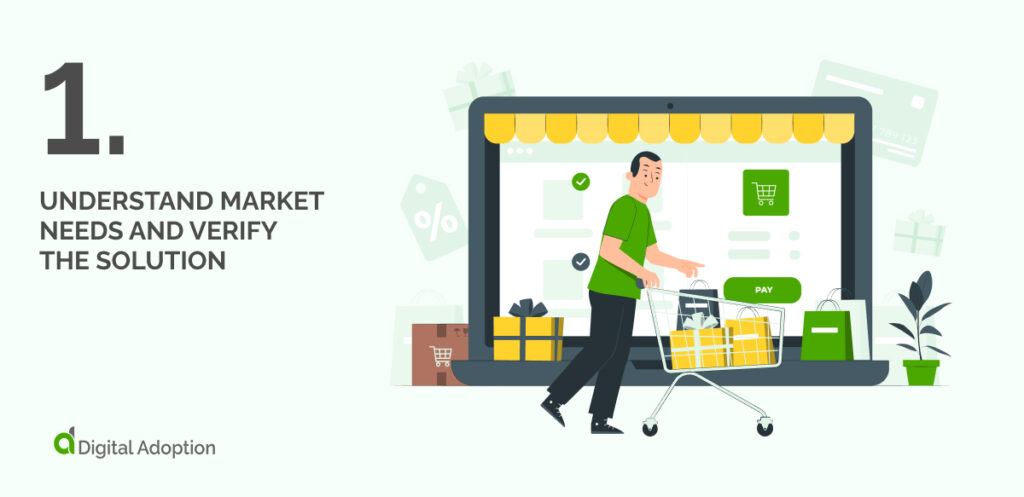
Before developing and launching a new SaaS solution, conducting thorough market research is critical to verify the need for the answer. This involves identifying the pain points your solution addresses and understanding the potential customer base.
- Know Your Audience

Understanding the target audience is essential for creating a product that meets their needs and preferences. Determine their pain points, behaviors, and interests to tailor an offering that resonates with them.
- Build a Stellar Customer Support Team
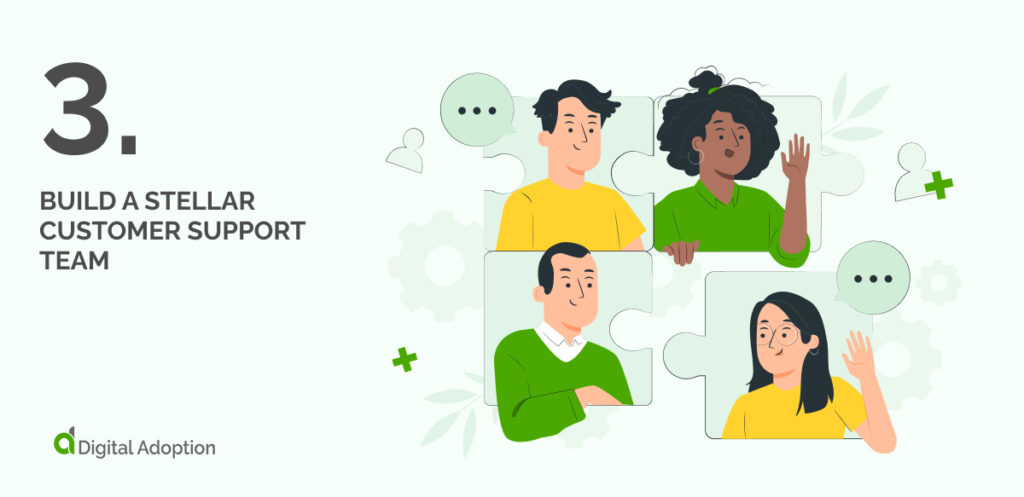
Creating a dedicated customer success team to support your users can boost adoption and engagement with your SaaS solution. Your team can provide comprehensive training, resources, and ongoing support to help users get the most out of the solution.
- Turn New Feature Releases into Memorable Events
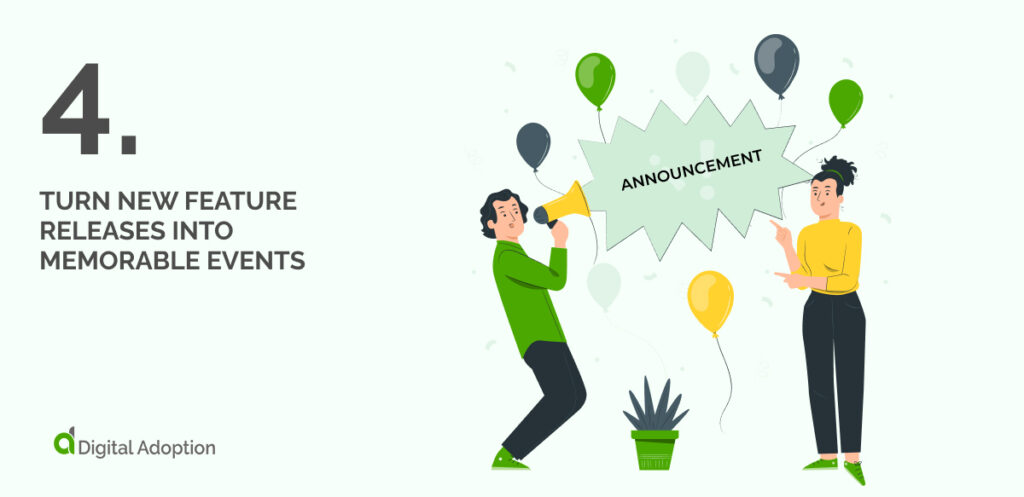
Launching new features as events can create a sense of excitement and generate buzz around your solution, encouraging more users to try it out. Use creative marketing tactics like videos or social media campaigns to engage your users.
- Simplify the Onboarding Process
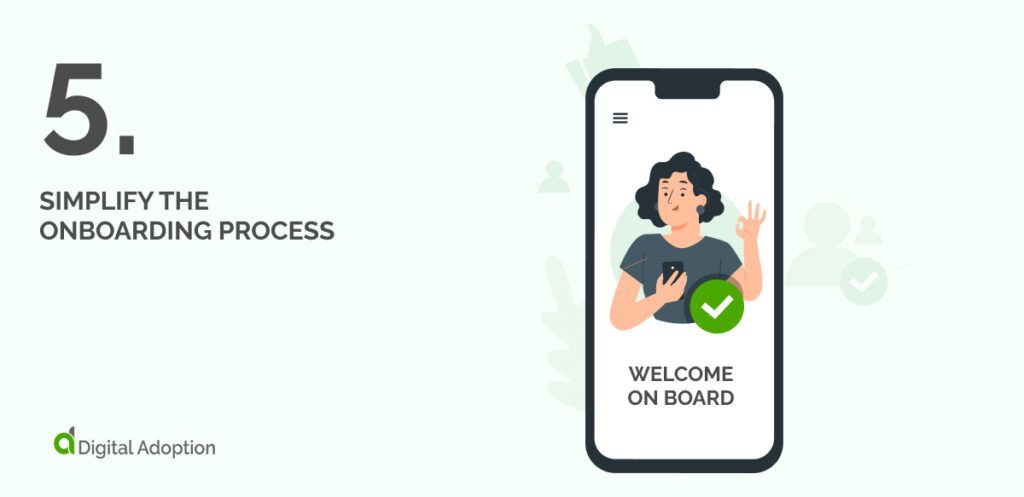
Effective onboarding ensures new users are comfortable and confident using your SaaS solution. Provide comprehensive training and resources, and simplify the onboarding process as much as possible.
- Establish a Pilot Program for Testing and Feedback
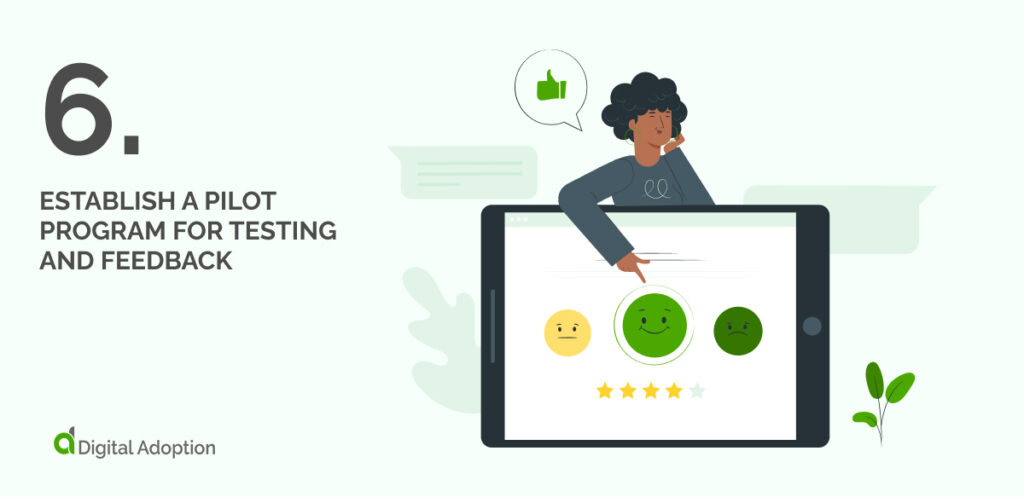
Launching a pilot program lets you get feedback and identify any issues with your SaaS solution. This can help you make necessary adjustments to create a seamless user adoption process.
- Encourage Continuous User Feedback And Suggestions
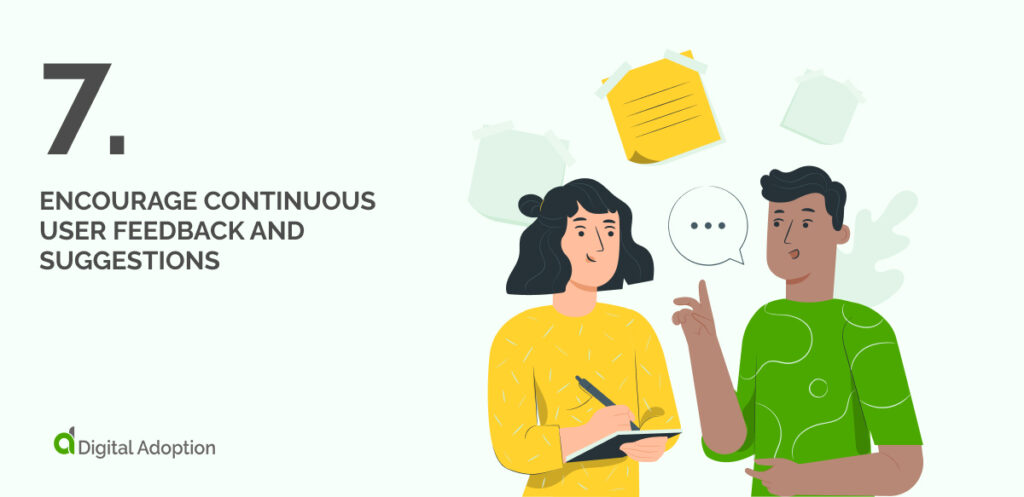
Encourage users to provide feedback and suggestions by building feedback mechanisms into your SaaS solution. Gather feedback regularly and integrate it into your development process for continuous improvements.
- Explain the Benefits And Inspire Action
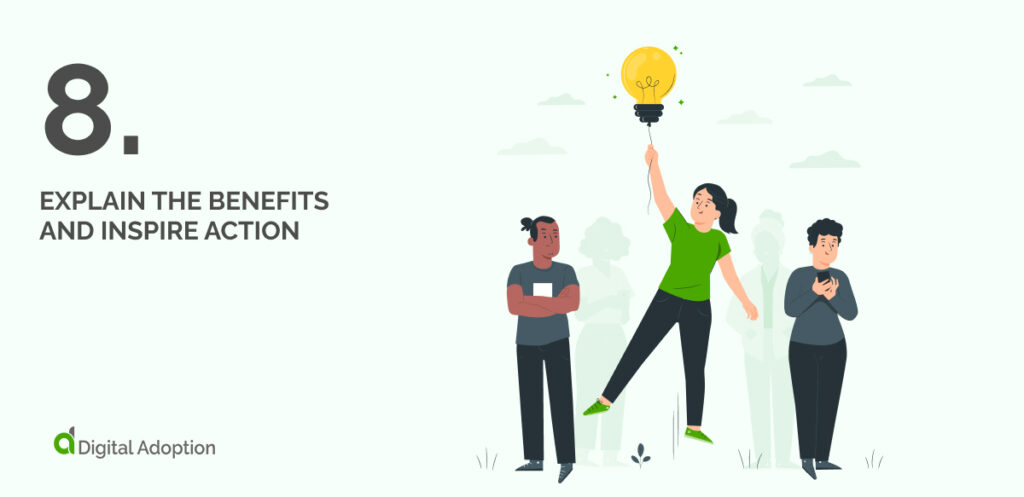
Effectively communicating the benefits of your SaaS solution can inspire users to adopt and use it actively. Highlighting the advantages can help create buy-in and generate enthusiasm among your users.
- Follow up Regularly To Ensure Continued Engagement
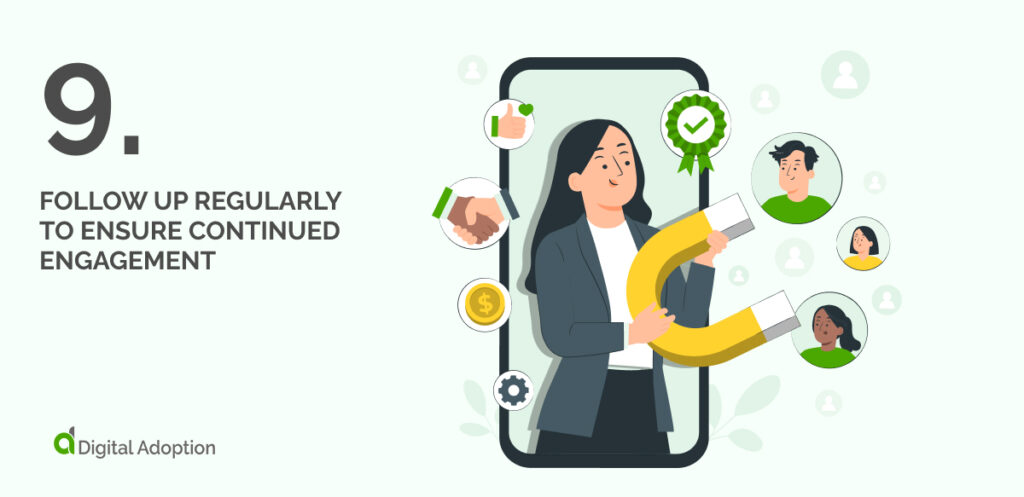
Regularly following up with your users can help identify issues and ensure ongoing engagement. Ensure that your support team proactively reaches out to users not regularly engaging with your solution.
- Provide Excellent Communication and Support at All Times
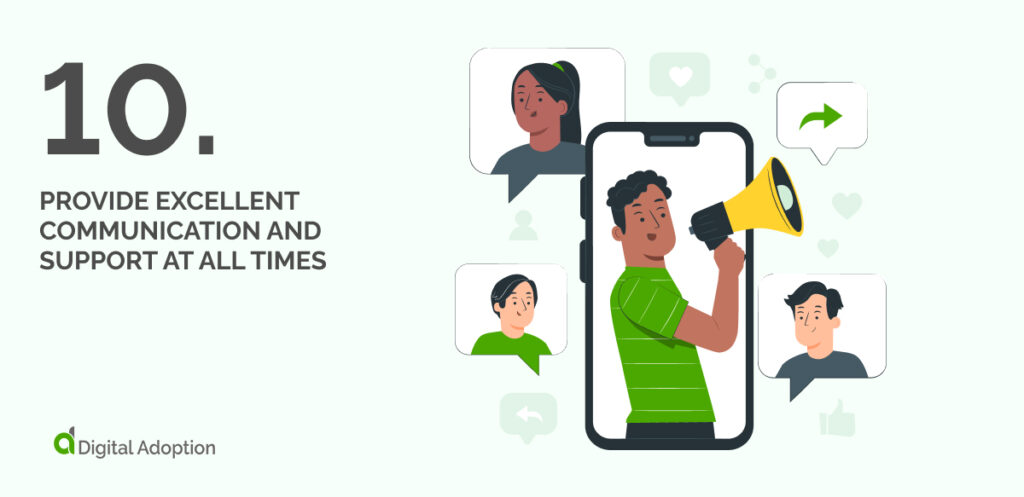
Excellent communication and responsive support are critical to ensuring ongoing engagement and adoption of your SaaS solution. Consistent and timely reinforcement can create a positive experience for your users and make them more likely to continue using your solution.
- Continuously Measure, Monitor, and Optimize Your Adoption Strategy
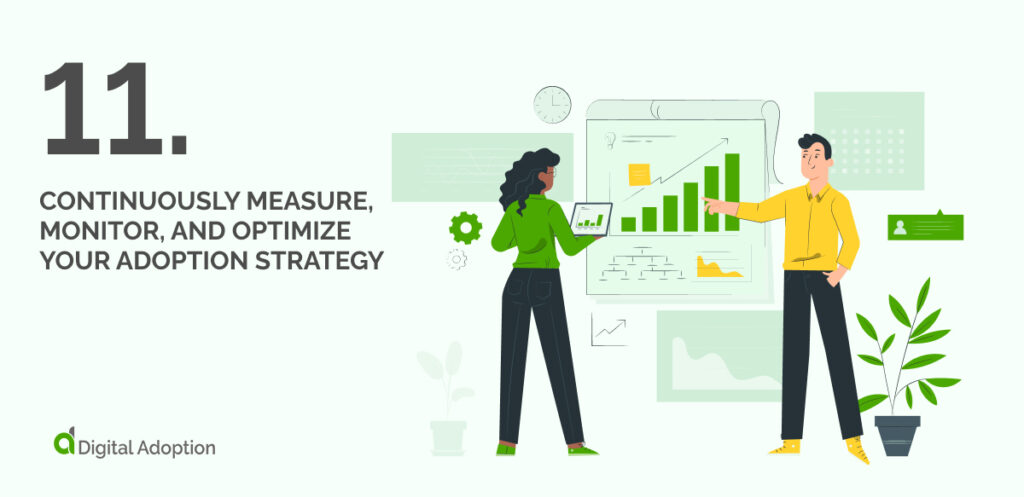
Finally, it’s crucial to continuously monitor, measure, and optimize your SaaS solution’s adoption strategy. Analyzing user feedback and adoption rates can help you identify areas for improvement and make necessary adjustments to ensure continued success.
Securing Future Success: The Role of User Adoption in Product-led Growth
User adoption is paramount for businesses that rely on product-led growth. As a SaaS provider, your ability to make your users adopt your product determines your success in the market. The better your users adopt your product, the more likely they become loyal customers, increasing your revenue.
Gartner predicts a surge in worldwide end-user spending on public cloud services (including SaaS). The report shows that the spending will grow by 20.7% to $591.8 billion by 2023, higher than the previous year’s 18.8% growth. Gartner forecasts that the SaaS and PaaS segments will be the hardest hit by inflation caused by staffing shortages and prioritization of margin protection. Both segments will continue to thrive, with SaaS predicted to grow by 16.8% in 2023.
As businesses continue to evolve and adapt, the importance of user adoption cannot be overemphasized. SaaS providers must put in extra effort to ensure a seamless user experience and the product meets the customer’s intended purpose. By doing so, they not only increase adoption rates but they will also encourage user loyalty, retention, and acquisition.
Improving user adoption is critical to achieving sustained growth and longevity. By ensuring easy adoption, high customer lifetime value, and product success metrics, businesses can set themselves up for long-term success.

